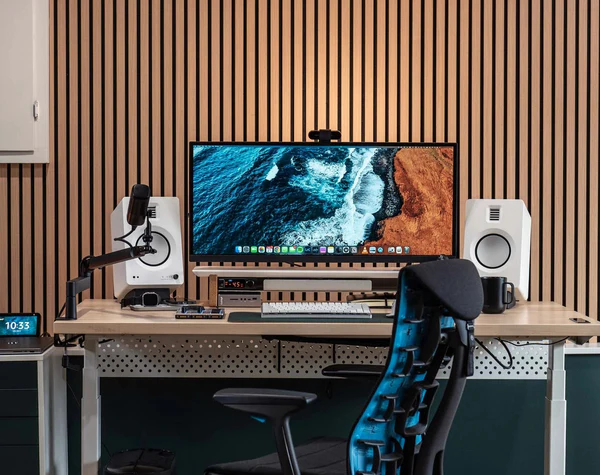
The Homeowner’s Guide to Choosing Acoustic Panels for Walls That Actually Match Your Décor
The phrase acoustic wall panels doesn’t exactly scream stylish home upgrade. For years, they’ve been lumped in with dull office cubicles and music studios—great for reducing echo, not so great for elevating your home aesthetic.
But not anymore.
These days, wall-mounted acoustic panels are pulling double duty. They still absorb sound beautifully, but they also come in colours, textures, and finishes that can actually complement, sometimes even elevate, your interiors.
So, if you’ve been thinking about improving the acoustics in your space without turning your walls into foam-tiled eyesores, here’s your go-to guide for choosing panels that tick both boxes: form and function.
1. Understand Your Room’s Acoustic Needs
Before diving into colours and finishes, take a minute to understand why you need sound-absorbing wall panels in the first place. Different rooms have different problems.
- Living rooms with hard floors often have echo and reverb issues.
- Bedrooms may need help blocking out street noise.
- Home offices might benefit from sound absorption for clearer calls and focus.
- Kids’ rooms (bless the chaos) can always use a little softening, both acoustically and visually.
Knowing your room’s pain points will help determine the number of panels you need and the ideal material or thickness.
Quick note: Acoustic panels won’t block outside noise completely, but they’ll significantly reduce sound bouncing around inside the room, which makes a big difference in comfort.
2. Choose the Right Material (That Doesn’t Clash With Your Style)
Once you’ve figured out where and why you need panels, it’s time to talk materials—and no, they don’t all look like grey felt anymore.
Here are some stylish, décor-friendly options:
- Fabric-wrapped panels – These come in a variety of colours and textures, from tweed to velvet. Easy to blend with soft furnishings.
- Wooden slat panels – Perfect for Scandi, Japandi, or modern industrial looks. They add warmth and texture while improving acoustics.
- PET felt panels – Eco-friendly (often made from recycled plastics), slim, and available in bold, contemporary colours. Great for playful, creative interiors.
- Printed or art-style panels – Yes, some panels double as artwork. Perfect for statement walls without compromising sound quality.
Pro tip: If you’ve already got a dominant material or texture in the room (e.g., exposed brick, timber floors), choose panels that contrast slightly but still sit comfortably in the mix.
3. Pick Colours That Add to the Room—Not Just Disappear
Here’s where a lot of homeowners play it too safe: going all grey or beige in the name of “neutral.” But in reality, acoustic panels can add character to a room—if you let them.
Try this:
- Match panel colours to existing tones in your soft furnishings (curtains, rugs, cushions).
- Use darker panels for dramatic walls, like behind the TV or bed.
- Add a pop of colour to a quiet, neutral space—navy, rust, olive, or even mustard can make a wall sing (pun intended).
- Want subtle texture? Stick to the same colour but mix in panels with different weaves or sheens.
Style cue: Use colour strategically. A well-placed strip or cluster of bold panels can create a focal point without needing artwork or shelving.
4. Think About Panel Layout (It’s Half the Battle)
Even the most beautiful panels can fall flat if they’re slapped up randomly. The layout affects not just performance, but the look and feel of the space too.
Here are a few layout ideas designers love:
- Symmetrical grid – Clean, modern, and ideal for larger walls.
- Vertical slats – Elongate your space and add texture—great behind beds or in narrow rooms.
- Clustered shapes (hexagons, diamonds) – A playful, graphic option for family spaces or creative studios.
- Half-height or ¾ height wrap – Adds cosiness without covering the entire wall. Perfect for small rooms.
Practical tip: Always measure your space before buying panels. It’s easy to underestimate how many you’ll need—and nothing breaks the look like an awkward gap.
5. Don’t Forget the Mounting Options
A stylish panel that damages your walls? No, thank you. Make sure you choose panels that suit your setup, especially if you’re renting or planning a flexible layout.
Common mounting methods:
- Peel-and-stick (great for lightweight PET panels)
- Velcro or 3M strips (ideal for temporary use)
- Z-clips or brackets (for heavier or more permanent setups)
- Magnetic backings (yes, some panels are that clever now)
Bonus: Some panels are modular, so you can start small and build your layout over time without committing to one big installation.
Final Thoughts: Panels That Sound Good and Look Even Better
Acoustic wall panels have finally caught up with interior design. You no longer have to choose between good sound and good taste—you can absolutely have both.
The key is to start with your room’s acoustic challenges, then build from there. Match the materials to your space, use colour confidently, and don’t be afraid to treat your acoustic panels like you would any other decorative feature.
Because yes—they make your home quieter, calmer, and comfier. But when chosen well, they also make it you.


